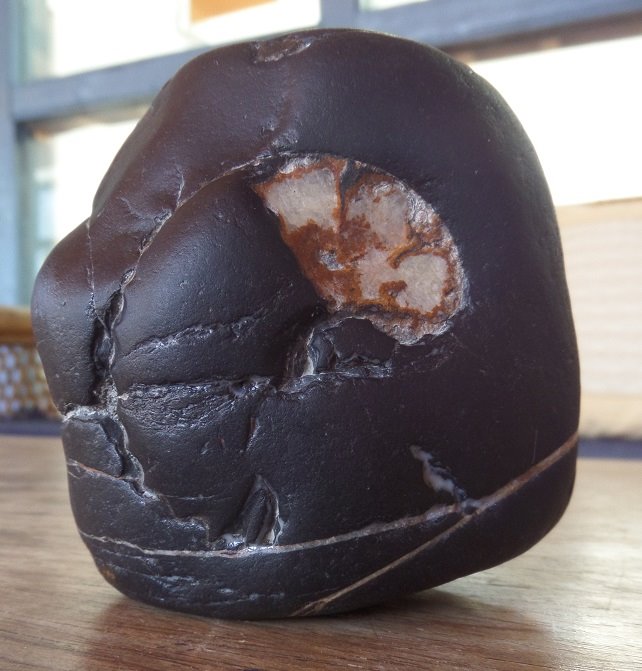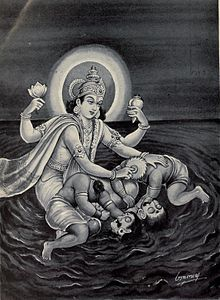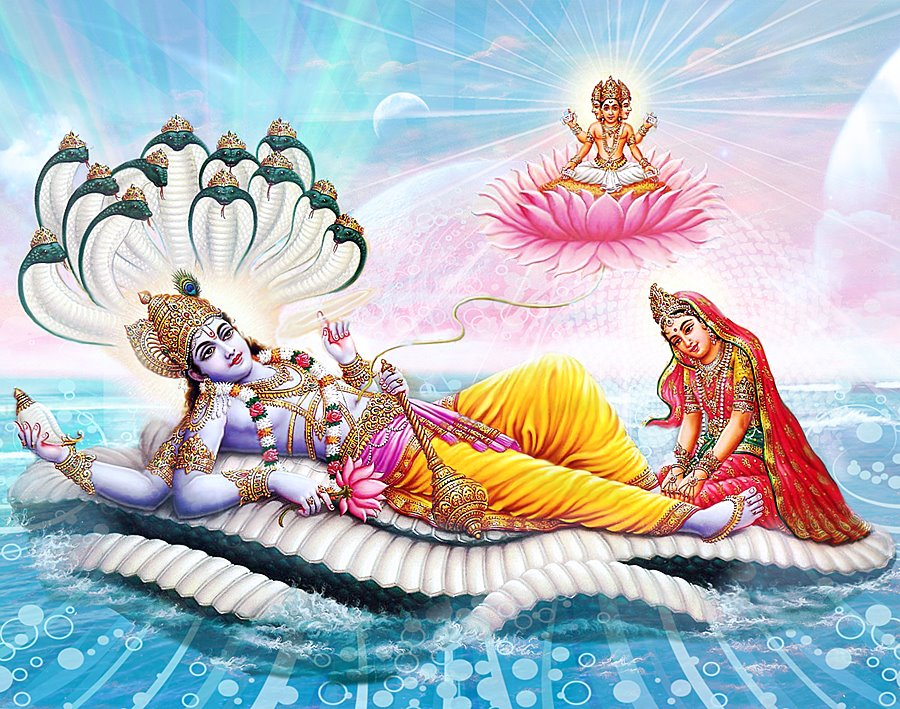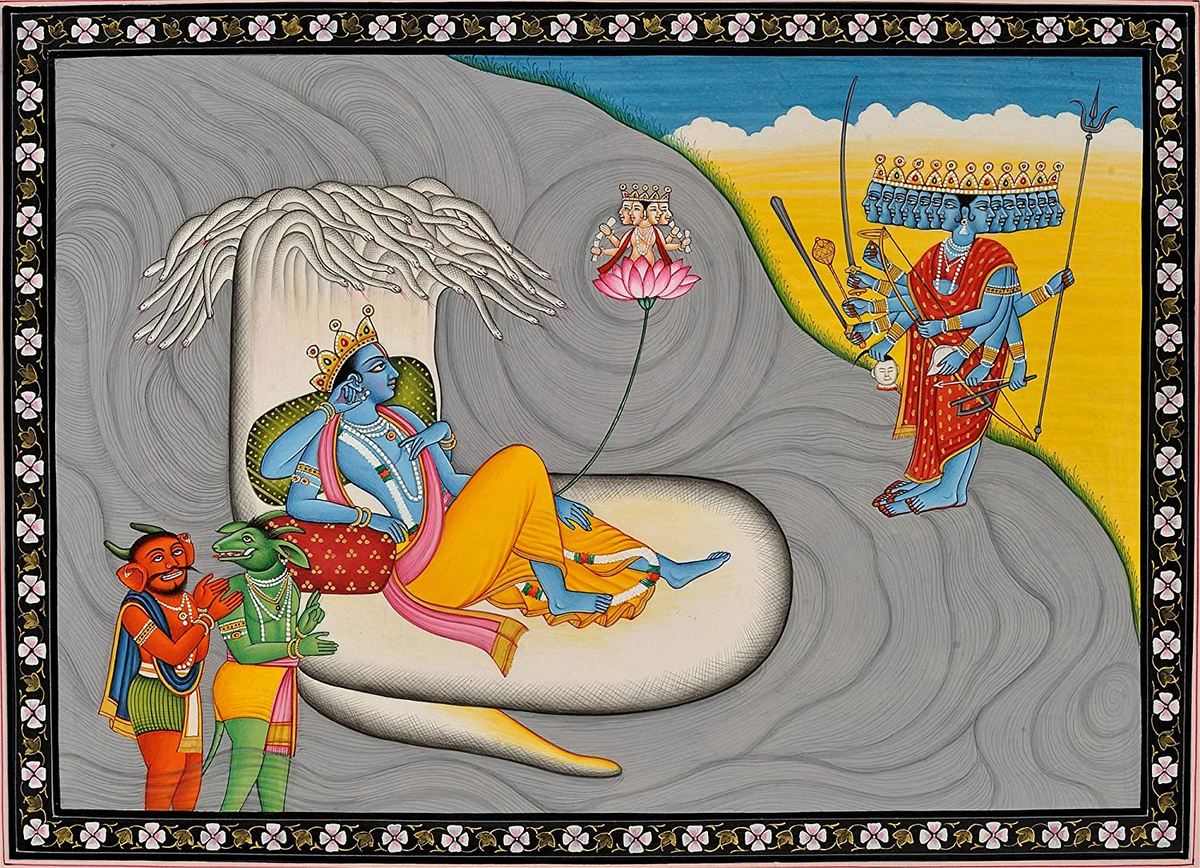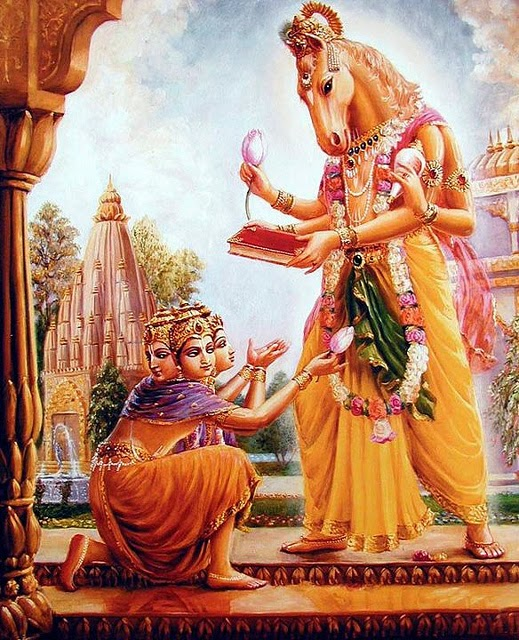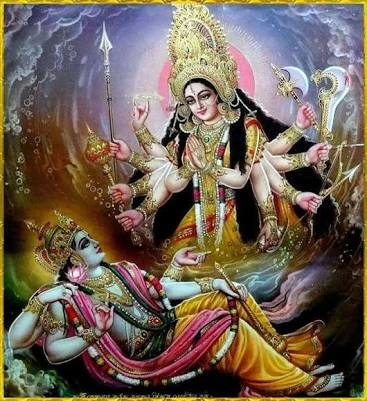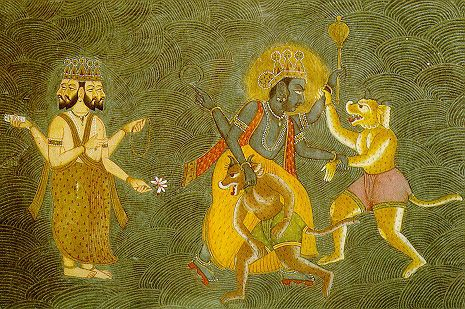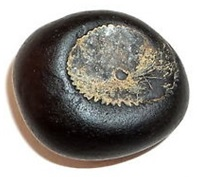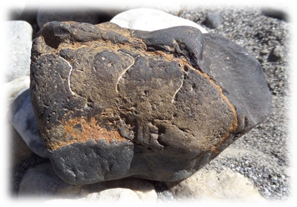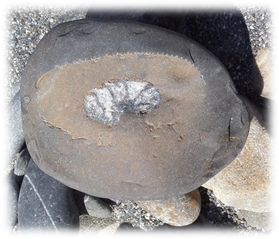The news has my blood pressure up this morning, but there's nothing like a good #FolkloreThursday Shaligram thread for a moment's respite!
Here today, then, is the Madhusudana Shaligram!
Here today, then, is the Madhusudana Shaligram!
Madhusudana is the 73rd name of Vishnu in the Vishnu Sahasranama. According to Adi Sankara' s commentary, Madusudana means the destroyer of the demon Madhu. Madhu and Kaitabha were Rakshasas (demons associated with Hindu cosmology) and both originated from one of Vishnu’s ears...
...while he was in the deep sleep of Yoganidra (additionally, a lotus sprouts from Vishnu’s navel upon which Brahma, the creator, sits and contemplates the creation of the cosmos).
In the Bhagavata Purana, Madhu and Kaitabha stole the Vedas from Brahma during the creation of the world and attempted to hide them beneath the waters of the primordial ocean.
Vishnu, in his manifestation as Hayagriva, subsequently killed them to retrieve the Vedas. The bodies of Madhu and Kaitabha then disintegrated into twelve pieces (two heads, two torsos, four arms, and four legs) which are said to represent the twelve seismic plates of the Earth.
In other legends, Madhu and Kaitabha are demons who set out to annihilate Brahma. However, Brahma was aware of them and invoked the goddess Mahamaya in his own protection. This awakens the sleeping Vishnu and the two conspiring demons are killed.
Descriptions of the Madhusudana Shaligram tend to vary in some details, but overall the consensus is that these Shaligrams either appear as a single, smooth, śila with the markings of a conch shell and a lotus or in the shape of an astra;
...any one of several supernatural weapons owned by a specific deity. (In later Scriptures, astras can also mean any weapon which was used by releasing it from one's hand (e.g. an arrow or spear)). (Trishula below)
For this reason, some traditions refer to Madhusudana Shaligrams by more specific titles, such as Padma Shaligrams (Lotus), Tulsi Shaligrams (tulsi leaf markings), Gadadhar Shaligram, Vajra Shaligram, or any other specific object or weapon name. (Lotus and Conch below)
Worship of this Shaligram is said to bestow liberation from temptations, particularly sensual temptations such as overindulgence in food or sex. Madhusudana Shaligrams are also believed to aid in meditation and focus, to improve tolerance, to bestow great perseverance...
...and to improve on good karmas. For this reason, these Shaligrams tend to be highly sought after by householders looking to transition into ascetics or sannyasis or by those who wish to improve their religious practices overall.
Madhusudana Shaligrams appear most often in Brahmanical worship and are comparatively rare outside of these contexts. Other Hindu traditions pair Madhusudan with Lakshmi, resulting in a Shaligram with similar characteristics to the Lakshmi-Narayan Shaligram but with...
...the addition of conch-like or lotus-like markings. For this reason, Madhusudan may commonly appear as an additional appellation of another name-type Shaligram and may not necessarily be identified on its own.
References: Praanatoshani Tantra pg. 347, Skanda Purana, Nagarekhanda, 244: 3-9, Brahmavaivartta (Prakritikhanda, Ch. 21)

 Read on Twitter
Read on Twitter